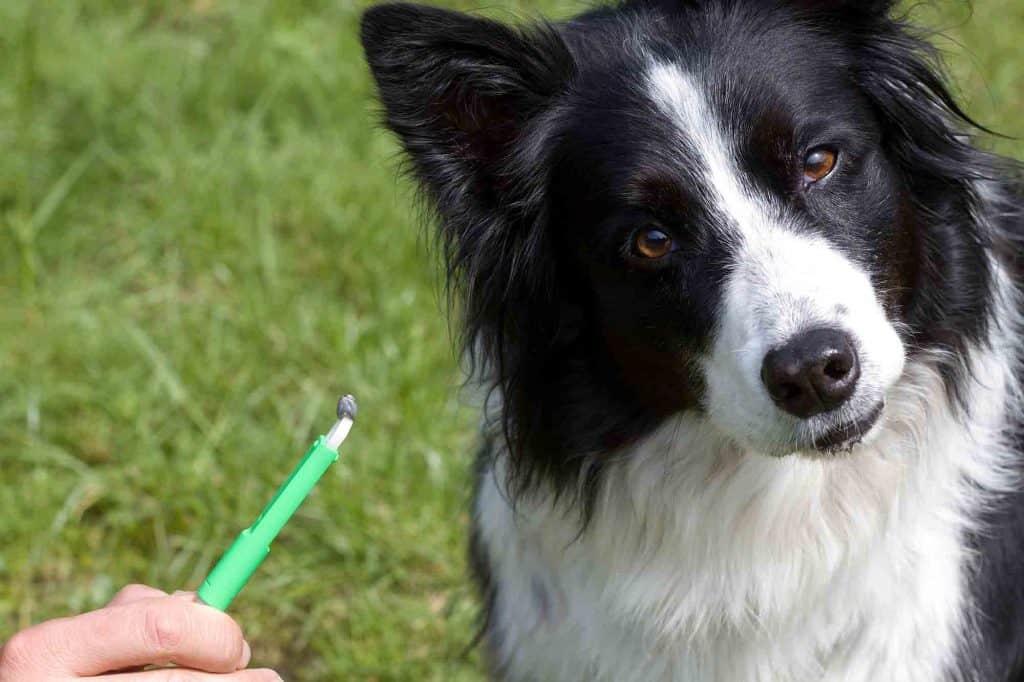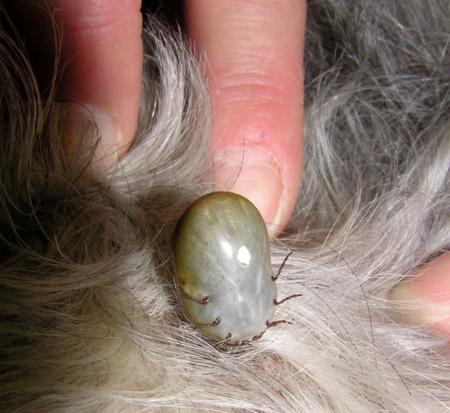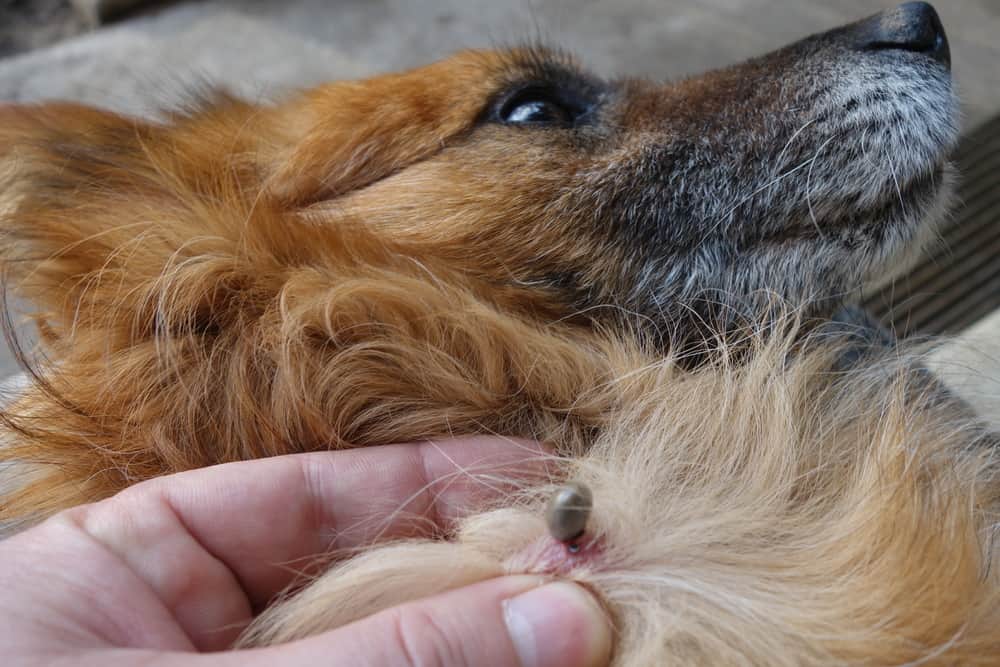As a loving pet parent, the last thing you want is for a tick to bite your dog. These nasty bugs can derail the health and comfort of your sweet pup.
For one, they carry dangerous diseases such as Lyme disease, babesiosis, tularemia, Rocky Mountain spotted fever, and ehrlichiosis just to mention a few. These are transmitted to your dog as the ticks bite and hang on to him for dear life.
Besides introducing diseases, ticks also make your pet incredibly uncomfortable. They are irritable and thus trigger excessive licking and scratching.
Repeated scratching and licking is bound to leave inflammation or cause wounds.
The best remedy? Tick removal. There are many strategies you can employ to get rid of ticks from your pooch’s body. From using tweezers to pouring vinegar into the affected area to using specialized tick removal tools, you have many options to choose from.
However, today we want to talk about something a little different about tick removal that pet parents need to know about: What you should do or not do after removing a tick from your doggie.
What to Do

Let’s begin with what to do after a tick removal exercise.
A. Dispose It Of In The Right Way
Once the tick is out, you need to dispose of it appropriately. Sadly, many pet parents get it all wrong regarding throwing the bugs away.
Remember that at the point of being detached from your dog’s body, the tick is likely very much alive.
Unless you broke the thing in half, best believe it is not dead yet. If you drop it somewhere in your house or yard, it will certainly revive and spread more disease in the house.
To be safe, ensure that it is disposed of in a way that doesn’t affect your dog or any other member of the family at all.
There are several ways of going about this. You may flush the tick in the toilet, place it in a sealed container and throw it in the garbage or stick it in a tree.
The latter option dries out the parasite and kills it.
B. Place The Tick In A Sealed Container
If you suspect that the tick has transmitted disease to your dog, it is in your best interest to keep it and take it to the vet for further tests.
In such a case, grab one tick and place it in a sealed jar, close it, and find your way to the clinic.
If you see any of the symptoms such as fatigue, loss of appetite, a change in the dog’s bark, retching, and rapid breathing, take action.
Tick-transmitted diseases are not to be joked about. If there’s any chance that your doggie is suffering from any of them, he will need immediate medical help.
C. Disinfect The Pet And The Tweezers
The third thing to do after removing a tick from your dog is to thoroughly disinfect the area and your tools.
Use an alcohol-based disinfectant or a natural antiseptic dipped in a cotton ball to wipe the infected area. The idea is to ensure that no germs make their way to your dog’s system and cause an infection.
If the area is already inflamed or severed, be careful not to use the likes of rubbing alcohol as these may irritate the dog’s skin.
The same goes for the eyes, ears, mouth, and other sensitive areas of your dog’s body.
Simply rub the area with plenty of water and watch it closely for the next few days.
Besides disinfecting the affected area, you also want to do the same for your tick removal tools. You don’t want to transfer anything to another dog or person.
D. Wash Your Hands
The next thing to do after disinfecting your dog and cleaning tools is to wash your hands.
Hopefully, you used a pair of latex gloves throughout the exercise to keep the tick and its contents away from your skin.
Even with a glove, you still need to clean your hands several times with soap and water afterward.
You never know what you pick up as you remove the tick or after. If possible, disinfect them with a good antiseptic before rinsing them with water.
E. Monitor Your Pet
Last but not least, it is necessary to keep a close eye on your dog immediately after removing a tick from his body and days later.
Don’t be in a rush to leave once the tick is out. Monitor the area for inflammation, formation of a wound, and the likelihood of a tick head still embedded in the dog.
If you don’t see anything right away, don’t stop there. Watch the dog’s behavior over the next couple of days.
If the spot is infected or the dog is generally unwell, make a point to see the veterinarian.
What Not To Do

Now that you know the things you should do after removing a tick from your dog, how about we look at those you shouldn’t do?
A. Never Pull a Tick Head with Your Hands
Sometimes you think you have gotten rid of a tick completely only to find out that its head is still tucked inside the dog. This happens to the best of us.
The first thing that comes to mind is to pull the thing right off with your fingers. Bad idea! This can cause it to release some of its contents into your dog.
Additionally, you can rip it further apart and make the exercise harder than it should be.
God forbid you can also injure your pet while trying desperately to detach the parasite.
Even tweezers don’t suffice at this point. You want to book a quick appointment with the vet and let them medically get rid of the tick head safely and effectively.
B. Throw the Tick on the Grass
Well, there is a certain stage in the life of a tick that tossing it anywhere doesn’t prove dangerous.
But there’s no need to take chances as you may not know exactly how old the bug is.
Just to be safe and ensure the tick dies, keep it off the grass. Utilize the methods discussed above instead.
C. Keep Your Gloves
Gloves are meant to create a barrier between you and the tick plus its contents.
After use, those need to be disposed of appropriately and immediately.
If possible, keep them in a tight bag and dispose of them as you would a tick. If not, burn them in your backyard but don’t keep them for any reason whatsoever.
What to Do After Removing Tick from Dog: Closing Thoughts
There you have it—the do’s and don’ts of tick removal—specifically the aftercare exercise.
Removing the tick is the first step. The next and most important thing is what you do after the tick is out.
This determines whether you register good success or epic failure at the entire task.
If you are up for a little light reading, we have many insightful posts that can help you get rid of ticks on your pup, including:
How to Tell How Long a Tick Has Been Attached To a Dog
How to Remove a Tick from a Dog with Vaseline
How to Remove Tick from a Dog with Alcohol
How To Get A Tick Off A Dog With Dish Soap
As an Amazon Associate, we may receive a small commission from qualifying purchases but at no extra cost to you. Learn more. Amazon and the Amazon logo are trademarks of Amazon.com, Inc, or its affiliates.

